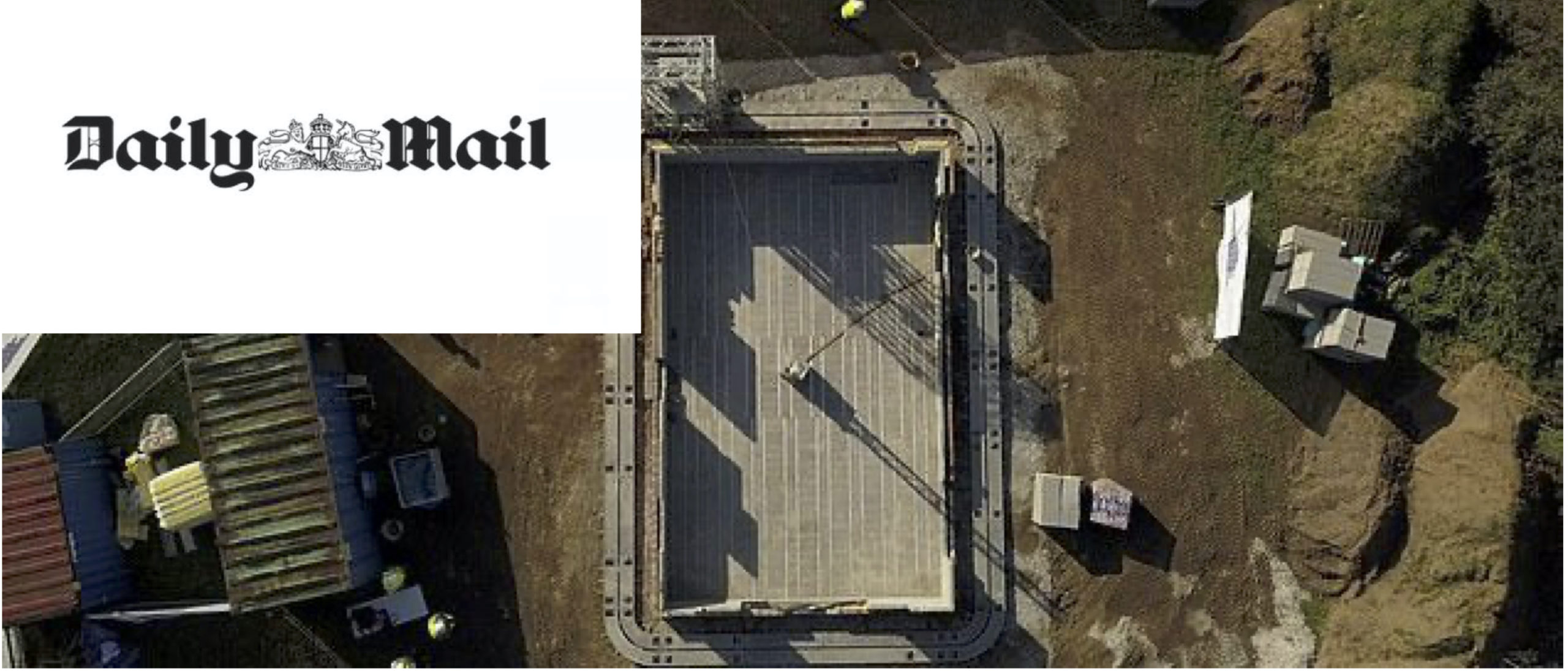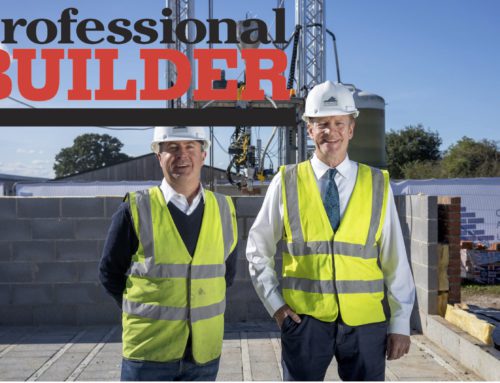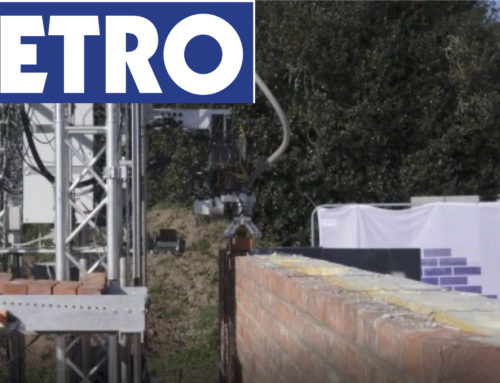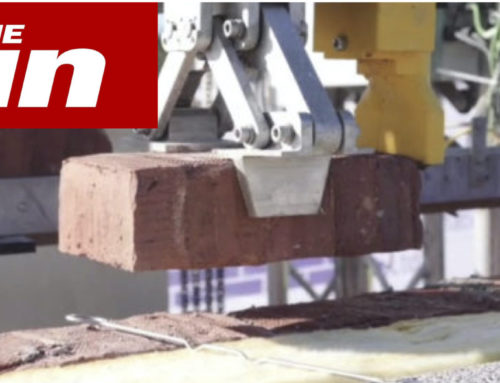- Robot-aided construction on the house in Everingham began on September 28
- The machine from York-based Construction Automation lays bricks and mortar
- It is controlled by two operators using a tablet — and needs to be fed materials
- The robot’s construction work is faster, safer and better quality, the owners said
In a first for UK construction, a three-bedroom house in Everingham, East Yorkshire is being built with help of a robot bricklayer rather human labourers.
Built by York-based firm Construction Automation, the machine is capable of setting down all the bricks, blocks and mortar — and can even ‘build around corners’.
Construction on the house began on September 28 this year — and is expected to be completed in around three weeks after ‘teething problems’ caused a week’s delay.
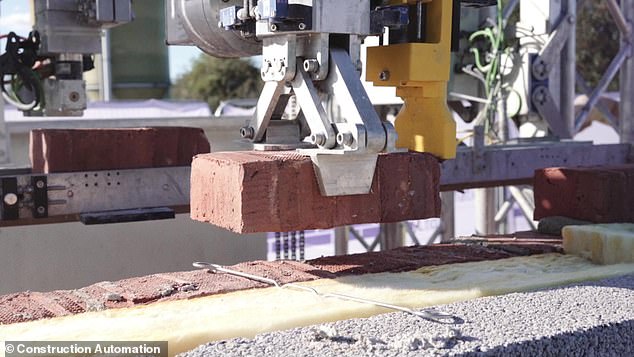
In a first for UK construction, a three-bedroom house in Everingham, East Yorkshire is being built with help of a robot bricklayer (pictured)rather human labourers

Built by York-based firm Construction Automation, the machine (pictured) is capable of setting down all the bricks, blocks and mortar — and can even ‘build around corners’
‘It is the first house in the UK to be built by a robot,’ Construction Automation director and founder David Longbottom told the BBC.
He added that, after extensive research, the firm was certain that there was ‘no house-building robot in use like this.’
The robot is controlled by a tablet-based user interface and employs a ‘sophisticated software control system’ that allows it to read digital copies of architectural plans.
The machine — which is mounted on a track a rides atop a 30 foot (9 metres) -high frame — needs two workers to control it, load bricks and mortar into its feeds and also completing damp-proofing and the pointing that finishes the mortar joints.
‘Our goal is to automate housebuilding as far as we can,’ said Construction Automation’s other founder, Stuart Parkes.
‘By doing this, we can increase productivity for the industry, improve health and safety, and guarantee quality,’ he added, explaining that the robot eliminated the need for scaffolding and for bricklayers to work up at a height.
It takes human bricklayers around two years to learn their craft through an apprenticeship.
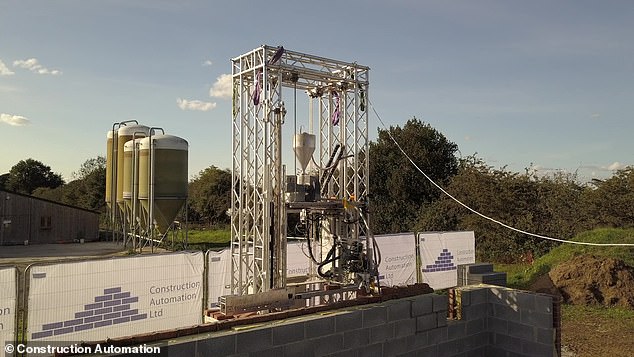
The machine — which is mounted on a track a rides atop a 30 foot (9 metres) -high frame, pictured — and needs two workers to control it using a tablet-based interface
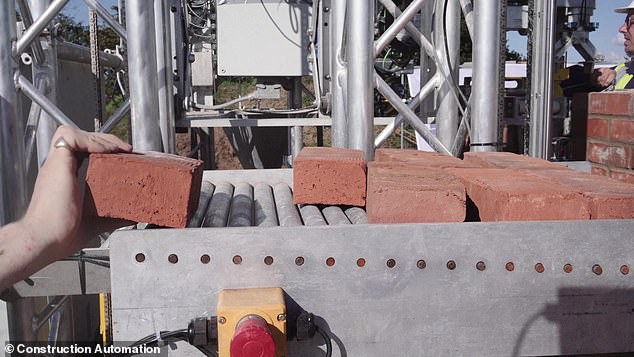
The robot also needs humans to load bricks (pictured) and mortar into its feeds and also completing damp-proofing and the pointing that finishes the mortar joints
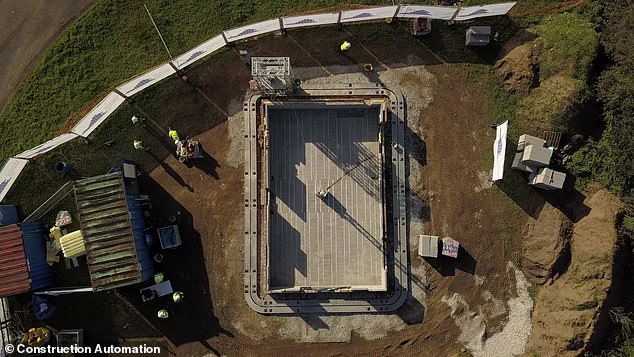
Construction on the house, pictured, began on September 28 this year — and is expected to be completed in around three weeks after ‘teething problems’ caused a week’s delay
News of the brick-laying robot, however, was not universally well-met.
The increasing use of robots to perform functions previously filled by humans ‘could be a recipe for mass unemployment and rising inequality,’ union Unite’s executive officer Sharon Graham told the BBC.
‘But with strong unions we can ensure that new technology delivers for everyone.’
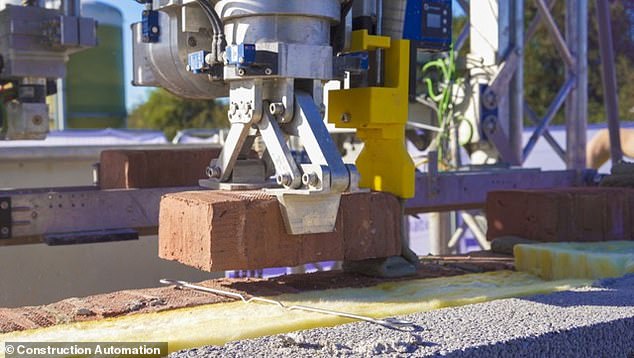
‘Our goal is to automate housebuilding as far as we can,’ said Construction Automation’s other founder, Stuart Parkes. ‘By doing this, we can increase productivity for the industry, improve health and safety, and guarantee quality,’ he added, explaining that the robot eliminated the need for scaffolding and for bricklayers to work up at a height
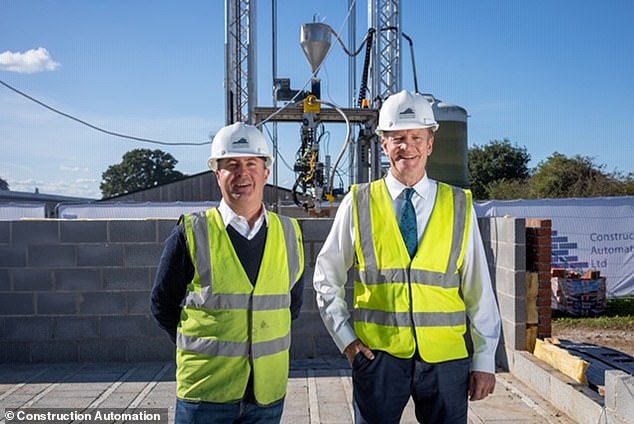
‘It is the first house in the UK to be built by a robot,’ Construction Automation director and founder David Longbottom (pictured, right, with co-founder Stuart Parkes, left) told the BBC. He added that the firm was certain that there was ‘no house-building robot in use like this’
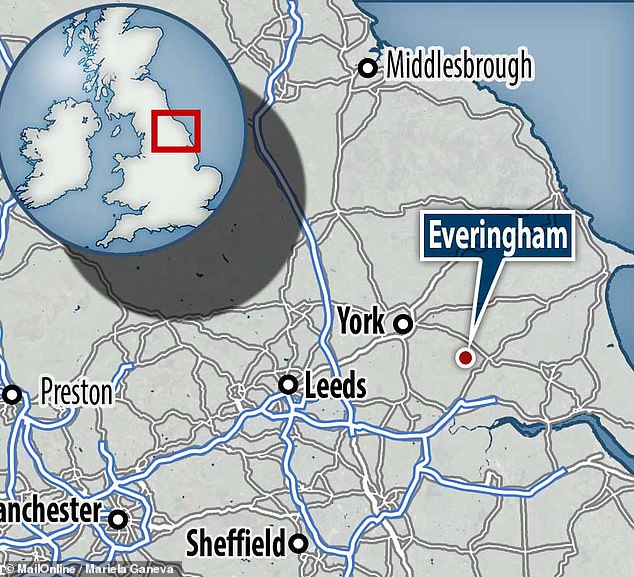
In a first for UK construction, a three-bedroom house in Everingham, East Yorkshire (pictured) is being built with help of a robot bricklayer rather human labourers

